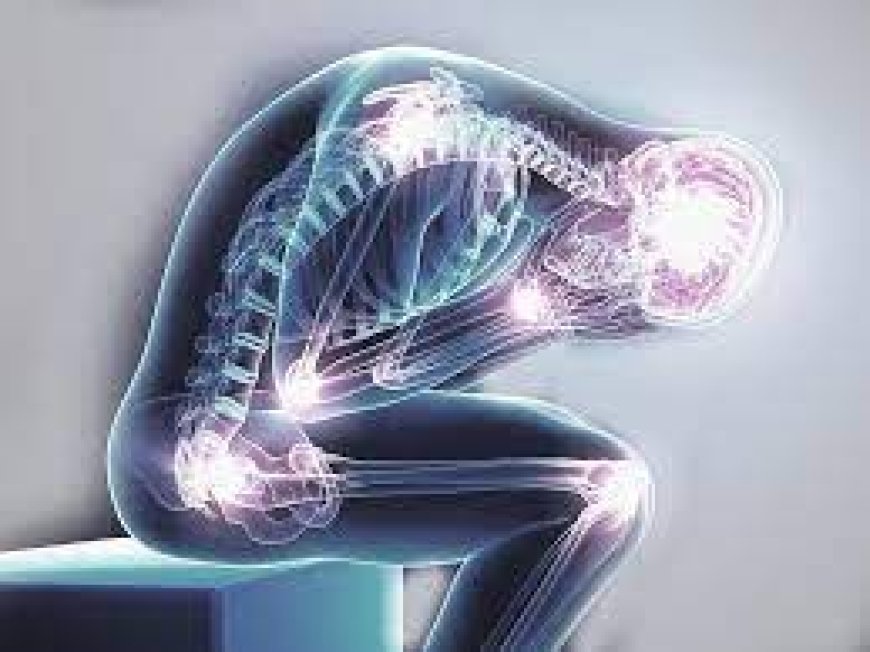Overcoming Neuropathic Pain: Inspiring Stories of Resilience
Neuropathic pain is a chronic condition caused by damage or disease affecting the somatosensory nervous system. This type of pain can be persistent and debilitating, significantly impacting the quality of life for those who suffer from it. Despite the challenges, many individuals have shown remarkable resilience in managing and overcoming neuropathic pain. This article delves into their inspiring stories, providing insights into the symptoms, causes, diagnosis, and treatment options available for neuropathic pain.
Types and Categories
Neuropathic pain can be categorized into several types based on its origin and nature. Understanding these types is crucial for accurate diagnosis and effective treatment.
Peripheral Neuropathy
Peripheral neuropathy occurs when nerves outside the brain and spinal cord are damaged. This type includes conditions such as diabetic neuropathy and postherpetic neuralgia.
Central Neuropathy
Central neuropathy is caused by damage to the central nervous system, including the brain and spinal cord. Conditions like multiple sclerosis and spinal cord injury often lead to this type of pain.
Focal Neuropathy
Focal neuropathy affects a single nerve or group of nerves, often resulting from physical trauma or compression.
Sympathetic Neuropathy
Sympathetic neuropathy involves the autonomic nerves and can affect bodily functions like blood pressure and digestion.
Symptoms and Signs
Neuropathic pain presents with a variety of symptoms, which can vary in intensity and duration.
Common Symptoms
- Burning Sensation: A persistent burning or tingling feeling is a hallmark of neuropathic pain.
- Stabbing Pain: Sharp, shooting pains can occur without any apparent trigger.
- Allodynia: A condition where normally non-painful stimuli, such as a light touch, cause pain.
- Hyperalgesia: An increased sensitivity to painful stimuli.
Uncommon Symptoms
- Dysesthesia: An unpleasant abnormal sensation that can be spontaneous or evoked.
- Anhidrosis: A lack of sweating in affected areas, which can accompany autonomic neuropathy.
Causes and Risk Factors
Understanding the causes and risk factors associated with neuropathic pain is essential for prevention and management.
Biological Factors
- Genetics: Genetic predisposition can play a significant role in the development of neuropathic pain.
- Underlying Diseases: Conditions like diabetes, HIV, and multiple sclerosis are common culprits.
Environmental Factors
- Exposure to Toxins: Prolonged exposure to certain chemicals and toxins can damage nerves.
- Infections: Viral infections, such as shingles, can lead to neuropathic pain.
Lifestyle Factors
- Poor Nutrition: Deficiencies in essential nutrients like vitamin B12 can contribute to nerve damage.
- Sedentary Lifestyle: Lack of physical activity can exacerbate the symptoms.
Diagnosis and Tests
Accurate diagnosis of neuropathic pain involves a combination of clinical evaluation and diagnostic tests.
Clinical Evaluation
- Medical History: A thorough medical history helps identify potential causes and risk factors.
- Physical Examination: A detailed neurological examination can reveal signs of nerve damage.
Diagnostic Tools
- Electromyography (EMG): Measures the electrical activity of muscles to detect nerve dysfunction.
- Nerve Conduction Studies (NCS): Assess the speed and strength of signals traveling through nerves.
- Imaging Tests: MRI and CT scans can identify structural issues in the nervous system.
Treatment Options
Managing neuropathic pain often requires a multifaceted approach tailored to the individual's needs.
Medical Treatments
- Medications: Anticonvulsants, antidepressants, and topical treatments can help manage pain.
- Surgical Interventions: Procedures like nerve decompression or neurostimulation may be necessary in severe cases.
Therapies
- Physical Therapy: Helps improve mobility and strength, reducing pain.
- Cognitive Behavioral Therapy (CBT): Assists in coping with the psychological impact of chronic pain.
Lifestyle Adjustments
- Diet and Nutrition: A balanced diet rich in essential nutrients supports nerve health.
- Exercise: Regular physical activity can alleviate symptoms and improve overall well-being.
Preventive Measures
Taking proactive steps can help prevent the onset of neuropathic pain or mitigate its severity.
Healthy Lifestyle
- Regular Exercise: Promotes overall health and reduces the risk of conditions that can lead to neuropathic pain.
- Balanced Diet: Ensures adequate intake of vitamins and minerals essential for nerve health.
Monitoring and Management
- Blood Sugar Control: Especially important for individuals with diabetes to prevent diabetic neuropathy.
- Avoiding Toxins: Reducing exposure to harmful substances can protect nerve health.
Personal Stories or Case Studies
Real-life stories provide valuable insights and inspiration for others dealing with neuropathic pain.
Story 1: John’s Journey with Diabetic Neuropathy
John was diagnosed with diabetes in his early 40s. Despite managing his condition, he developed neuropathic pain in his feet. Through a combination of medication, physical therapy, and lifestyle changes, John learned to manage his pain effectively. His story is a testament to resilience and the importance of a comprehensive treatment plan.
Story 2: Sarah’s Battle with Postherpetic Neuralgia
After recovering from shingles, Sarah experienced severe postherpetic neuralgia. Her journey involved exploring various treatments, including nerve blocks and acupuncture. Sarah’s determination to find relief and her positive attitude have made her a beacon of hope for others suffering from similar pain.
Expert Insights
Medical professionals offer valuable advice on managing and overcoming neuropathic pain.
Dr. Emily Harris, Neurologist
“Early diagnosis and a personalized treatment plan are crucial for managing neuropathic pain effectively. Patients should not hesitate to seek medical advice and explore different treatment options.”
Dr. Robert King, Pain Management Specialist
“Combining medical treatments with alternative therapies can significantly improve quality of life for neuropathic pain patients. It's important to address both physical and psychological aspects of pain.”
Conclusion
Overcoming neuropathic pain is a challenging journey, but it is possible with the right approach and support. By understanding the types, symptoms, causes, and treatment options, individuals can take proactive steps to manage their condition. The inspiring stories of resilience highlighted in this article demonstrate that with determination and a comprehensive treatment plan, it is possible to live a fulfilling life despite the challenges of neuropathic pain.
What's Your Reaction?

























